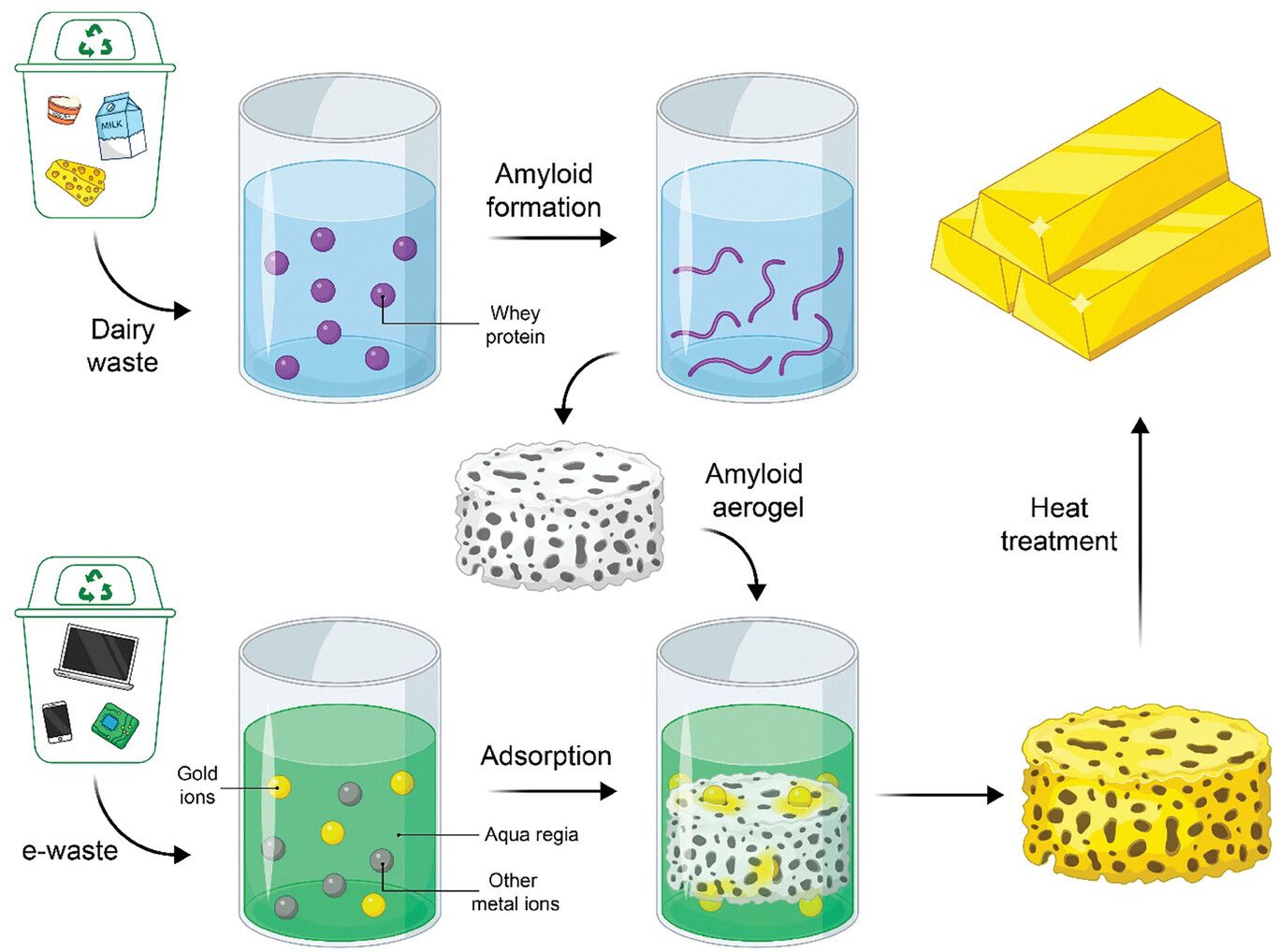Cheese: a Key Ingredient in Extracting Gold from Electronic Waste
Follow us on Google News (click on ☆)

Electronic waste is filled with valuable metals such as copper, cobalt, and above all, gold. The recovery of gold, in particular, has become a major issue due to the increasing demand for this precious metal. Until now, recovery methods have been energy-intensive and commonly required highly toxic chemicals. It is in this context that Professor Raffaele Mezzenga's team from the ETH Zurich proposes an innovative solution: a sponge made from proteins capable of efficiently extracting gold from electronic waste.
The process starts with the denaturation of whey proteins, a step that transforms them into structures called nanofibrils. These protein nanofibrils are then used to create a kind of sponge. When this sponge is placed in a solution containing metallic ions from electronic waste, it uniquely has the ability to selectively adsorb gold ions.
The experiments involved recycling used computer motherboards. Metals are dissolved in an acid bath to ionize them, then the protein sponge is introduced to capture the gold ions. This method yielded a nugget of 450 milligrams (approximately 0.015 ounces) from 20 motherboards, composed of 90.8% gold, equating to a quality of 21-22 carats.

The commercial potential of this technology is substantial. The production and energy costs of this process are fifty times lower than the value of the recovered gold, making the method economically viable. The research team is now looking to adapt this technology for the market, exploring other potential sources of gold recovery, including industrial waste and other protein-rich food industry by-products.
This approach, transforming two types of waste into gold, is hailed by Professor Mezzenga as a hallmark of sustainability. Using a waste product from the food industry to recover a precious metal from electronic waste represents a significant advance towards greener and more efficient recycling methods.